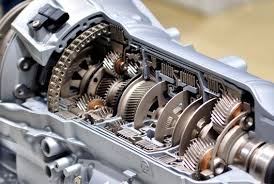How To Identify If Your Auto Transmission Requires Repair
If you’ve ever driven a manual transmission vehicle, you’ll know that problems tend to be obvious and can be reduced by changing your own driving habits. With an automatic transmission system, it may be harder to detect problems before they become major – and expensive – issues.
We’ve put together some warning signs that could indicate problems, because prevention costs less than the cure.
- Does your engine rev when you step on the gas?
- Is there a delay before the car starts moving forward from drive position?
- Does the gearshift feel less smooth?
- Do you hear any thudding or clunking sounds when the car shifts gear?
- Does your car feel as if it has too much power or too little power at odd times?
- Does the engine make a whining noise or is there a change in its normal pitch?
These signs that your transmission may be slipping need immediate attention. If you experience any of these – with or without a warning light on your dashboard – have it seen to by a professional mechanic as soon as possible.
There are many reasons why your transmission could slip or fail, often related to the fluid that is the lifeblood of your transmission system. You don’t have to be an auto expert to run through this checklist:
- Check your car’s transmission fluid at least once a month.
- New fluid is pinkish in colour, burnt or dirty fluid is brown or black.
- Burnt fluid is a red flag – check the smell as well as the colour.
- Ensure the fluid levels aren’t low by using the transmission dipstick.
- There should be no leaks. Any leak suggests a gap somewhere.
- Insufficient fluid leads to overheating.

Does Your Vehicle Need Transmission Repair?
Transmission repair can be expensive, but without a properly working transmission, your vehicle cannot run. Both manual and automatic transmissions ensure that power moves from the vehicle’s engine to the wheels. Your vehicle’s engine works at speeds called RPMs or Revolutions per Minute. The transmission’s job is to transmit power to the wheels while keeping the engine’s RPMs in the optimal range. It does this through a complicated combination of gears and parts that recognize changes in speed and RPMs and move accordingly to optimize the vehicle’s energy.
If the transmission isn’t shifting the gears properly, you’ll notice a bumpy ride because the energy isn’t transmitting smoothly from the engine to the wheels. The vehicle may buck or stall, or you’ll hear grinding noises from underneath the vehicle. If the transmission is really in trouble, you may even see smoke issuing from it. All of these signs are indicators of problems and should be checked by a mechanic immediately.
Fix Minor Transmission Problems Before They Get Worse
As with most repairs, transmission repair costs can be contained if you fix minor problems before they get worse. Some minor transmission problems to be bring to your mechanic’s attention include:
Leaks and stains under the car
Transmission fluid is typically dyed red to make it easier to identify it from other vehicle fluids, and in both rear and front wheel drive vehicles the transmission is located underneath the vehicle and towards the rear. Puddles of red fluid under the rear end of the vehicle indicate a leak somewhere in the system.
Noises
If you typically drive with the radio blasting, turn it off occasionally and listen to your vehicle. Many problems begin as unusual noises, but if you’re not sure what your vehicle normally sounds like you may not be able to tell the unusual from the usual. Transmission noises that indicate trouble brewing include whining noises, especially a whining sound under the floorboards while your vehicle moves from gear to gear.

Changes in shifting behavior
Your vehicle should move smoothly between gears whether you have a manual or an automatic transmission. If you feel a jolting sensation or the vehicle bucks during a shift, it’s time to have the transmission checked. A heavy sensation in the vehicle during shifting may also indicate a problem.
Money Saving Transmission Repair
Even if you’re worried about the bill, it’s important to have your vehicle’s transmission checked if you notice these or other changes. Talk to your mechanic. He may have some simple suggestions to extend the life of your vehicle’s transmission. Transmission fluid and filters should be changed around every 25,000 miles or so, but check your vehicle’s maintenance schedule for the exact number as it can vary considerably. Transmissions do have a filter that cleans the fluids inside, and as with your vehicle’s engine, keeping the fluids clean and the filter clear prevents build up and debris from harming the transmission. Routine maintenance alone may prevent or delay costly transmission repairs.
Here are some frequently asked questions about transmissions:
Q: When should I check the transmission fluid?
A: You should check the transmission fluid regularly. Try to check it at least once a month or at the sign of any trouble, for instance if there is any hesitation when you shift gears in an automatic.
Q: How do I check the transmission fluid?
A: It’s not hard to check your transmission fluid if the vehicle is an automatic. This link to the Dummies guide to checking your transmission fluid has step-by-step instructions and illustrations that show you where to locate the dipstick. What you want is clear, pink transmission fluid. If it is low, top it up. If it is dark, smells burnt or has bits in it then you need to get it changed by at a reliable auto repair shop.
Q: Is it really that important to check the transmission fluid?
A: Yes, it can be. Often times the symptoms you’ll experience from low or dirty transmission fluid will be the same as transmission problems. If you check the fluid levels regularly and refill as necessary then you’ll know if there are any symptoms of trouble that it’s not because the fluid levels are low and you need to see a mechanic.
Are there different types of transmission fluid?
A: How do I know what to buy? Yes, there are many different types of transmission fluid, each designed for a certain transmission. Different vehicles require different transmission fluids and the age of the car can also be a factor because newer transmissions take different types of transmission fluids than older vehicles. Don’t guess! Find out which type of transmission fluid is required for your vehicle by checking your owner’s manual.
Q: What is a transmission flush and should I get one?
A: A transmission flush is used by some auto repair shops with the goal of flushing out debris. Auto Tech does not do any sort of transmission flush. Flushing an older transmission can cause harmful sediment to get stuck in the solenoids of the transmission. We heavily favor regular maintenance to lengthen the life of your transmission. We service the transmission by changing fluid and the filter and do not recommend having your transmission flushed.
Q: How do I know I have a fluid leak from the transmission?
A: Transmission fluid is slightly pink in color – it will appear pink or red, or possibly more brownish if the transmission fluid is dirty and needs to be replaced. When you feel transmission fluid it will be slick and oily on your fingers. It smells much like oil unless it is dirty, in which case it will smell burnt. Usually transmission fluid leaks around the front or middle of your vehicle, so if you find puddles of reddish liquid there it is probably transmission fluid. Another clue is if in addition to the leak your transmission is not working well and you notice changes in the way it sounds when you shift gears, or if shifting gears is not working as well. In this case you likely have a leak of transmission fluid that is impacting how your transmission operates.